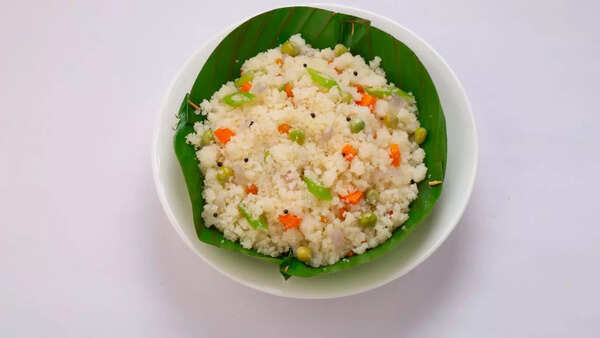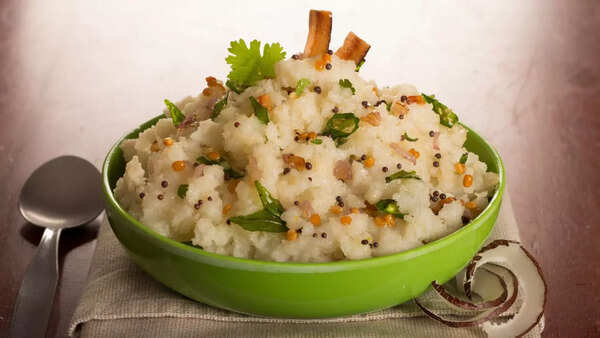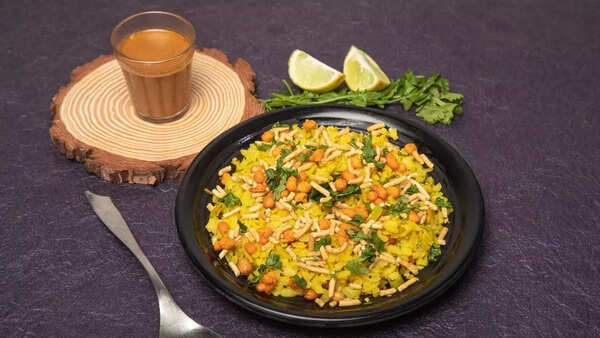Poha: Flattened Rice
Poha, also known as flattened rice, is a traditional Indian dish made from rice that is boiled, rolled, flattened and then dried to form flakes. Poha is made in many ways in different parts of the country. However, as far as the health aspect of poha is concerned, its taste and health benefits are also different. Calories The taste of Poha depends on the method of preparation and the ingredients used. Here are the things that make Poha a great option for breakfast:
low calorie
Poha is relatively low in calories compared to other grains, making it a good option for people who keep an eye on their calorie intake. In fact, 100 grams of vegetable poha contains about 130-150 calories. However, the exact calorie count may vary depending on the ingredients used and the method of preparation.
rich in Iron
Poha contains a good amount of iron, which is important for oxygen transportation and overall energy levels in the body.
gluten free
Poha is naturally gluten-free, making it suitable for individuals with gluten intolerance or celiac disease.
Easy to digest
Due to its flat and processed nature, poha is light on the stomach and easy to digest, making it a preferred choice for breakfast or a light meal.

Upma: Semolina
Upma is another popular breakfast dish in South India, mostly cooked with a combination of mixed vegetables, mild spices, herbs, dry roasted semolina and peanuts. This light and tasty breakfast recipe is a popular choice among weight watchers and is considered one of the healthiest South Indian breakfasts, but there is a huge difference in calories and nutrients when it comes to deciding between poha and upma. Here is all you need to know about upma and its lesser-known benefits.
Rich in Protein
Semolina used in upma contains relatively more Vitamin C. ProteinWhich is essential for muscle repair, growth and overall body function.
Good source of vitamins
It contains B-complex vitamins such as thiamine (B1) and riboflavin (B2), which are important for energy production and metabolism.

fiber content
Upma can be made with vegetables, increasing its fibre content, which aids digestion and promotes satiety.
Versatile
Due to the versatile taste and texture of semolina, upma can be made and customized with a variety of vegetables and spices.
Difference in processing?
Both poha and upma offer nutritious options, but their processing methods differ. Whereas, flattened rice undergoes minimal processing, mainly soaking and flattening, thereby preserving its nutrient content, including iron and B vitamins. Upma, on the other hand, involves roasting and cooking the semolina, which may slightly reduce its nutrient density compared to raw semolina. However, both recipes can be made healthier by adding vegetables and using minimal oil. Ultimately, choosing between poha and upma for health depends on personal preferences and additional ingredients used in the preparation.

Which one is healthier?
Both poha and upma are nutritious and high on taste, but choosing between the two largely depends on individual dietary preferences, health goals and nutritional requirements:
For calorie conscious individuals: Poha may be better due to its lower calories and lighter texture.
For protein and vitamin intake: Upma has high protein content and important B-complex vitamins, making it a nutritious option especially for vegetarians.
Digestive health: Both dishes are generally easy to digest, but the lighter texture of poha may be too soft for sensitive stomachs.
Gluten-free requirement: If you need a gluten-free option, poha is naturally free of gluten.

Classic Poha Recipe
To make simple poha, first wash 1 cup poha (flattened rice pieces) in cold water till they become soft, then keep aside. In a pan, heat 1 tbsp oil and add mustard seeds, cumin seeds, curry leaves, chopped green chilies and chopped onions. Saute till the onions turn translucent. Add turmeric powder, salt to taste and mix well. Add the soaked poha to the pan, stir gently to combine with the spices and cook for a few minutes till it is heated through. Garnish with fresh coriander leaves and lemon juice before serving hot.
Delicious Upma Recipe
To make delicious vegetable upma, first roast the semolina in a pan till it turns golden brown, keep it aside. In the same pan, heat some oil and mustard seeds till they crackle, then add chopped onions, green chilies and curry leaves and fry till the onions turn translucent. Next, add chopped vegetables like carrots, peas and capsicum and cook them till they turn soft. Add water or vegetable broth, add salt and let it boil. Slowly add the roasted semolina, mix well to avoid lumps. Cover and cook till the upma is completely cooked and puffed up. Garnish with chopped coriander leaves and lemon juice before serving hot.
conclusion
To summarise, it can be concluded that the choice between poha and upma depends on your personal preferences, dietary needs and health goals. Both the dishes are nutritious options for breakfast or any meal of the day, providing essential nutrients, satiation and comforting taste. Including them in your diet can help improve overall health and well-being.















